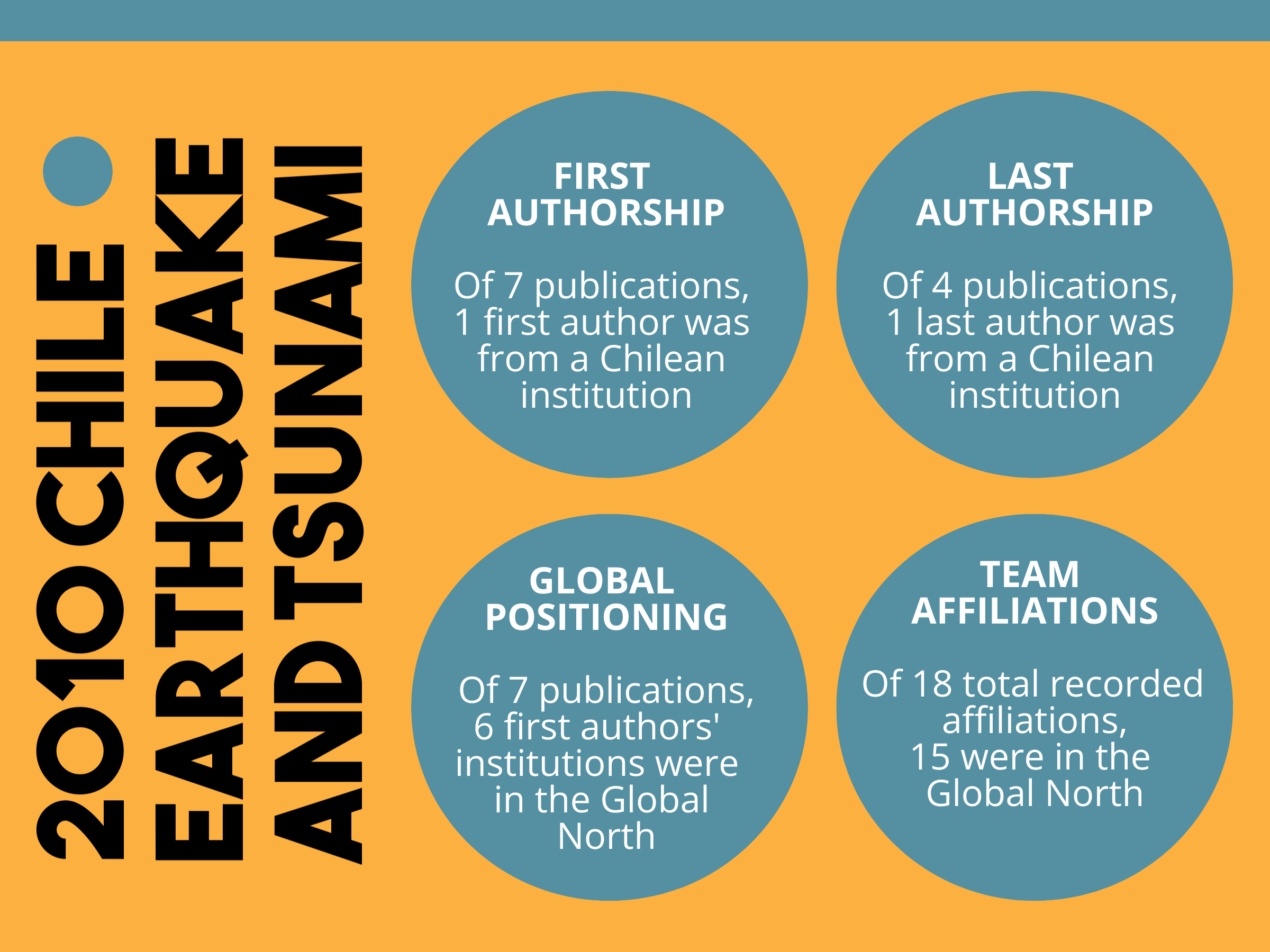This November, my friend and colleague Ava Sullivan and I had the opportunity to share some of our work at the annual APHA conference in Atlanta.
As emerging scholars in fields that often see multi-country collaborations, we wanted to better understand dynamics in authorship. More specifically, we wanted to understand some of the relations between where a disaster occurs and who tends to hold prominent authorship positions in peer-reviewed publications about that disaster.
To do this, we systematically looked through the authorship affiliations of articles related to 4 earthquakes that happened in close proximity to one another: the 2010 Chile Earthquake and Tsunami, the 2010 Haiti earthquake, the 2011 Tohoku earthquake and tsunami, and the 2011 Christchurch earthquake.
What did we find?
If you’ve worked in collaborations like these, the results might not be surprising.
Global North earthquakes typically had representation from the event country in first authorships, last authorships, and corresponding authorships.
The opposite held true for the Global South earthquakes, with most of these positions being held by scholars in the North.
Overall, we hope these findings contribute to conversations about:
What kinds of knowledge and knowledge holders we tend to legitimize over others
What the implications are when contributions to a global way of understanding is dominated by a specific group of people from a specific context



